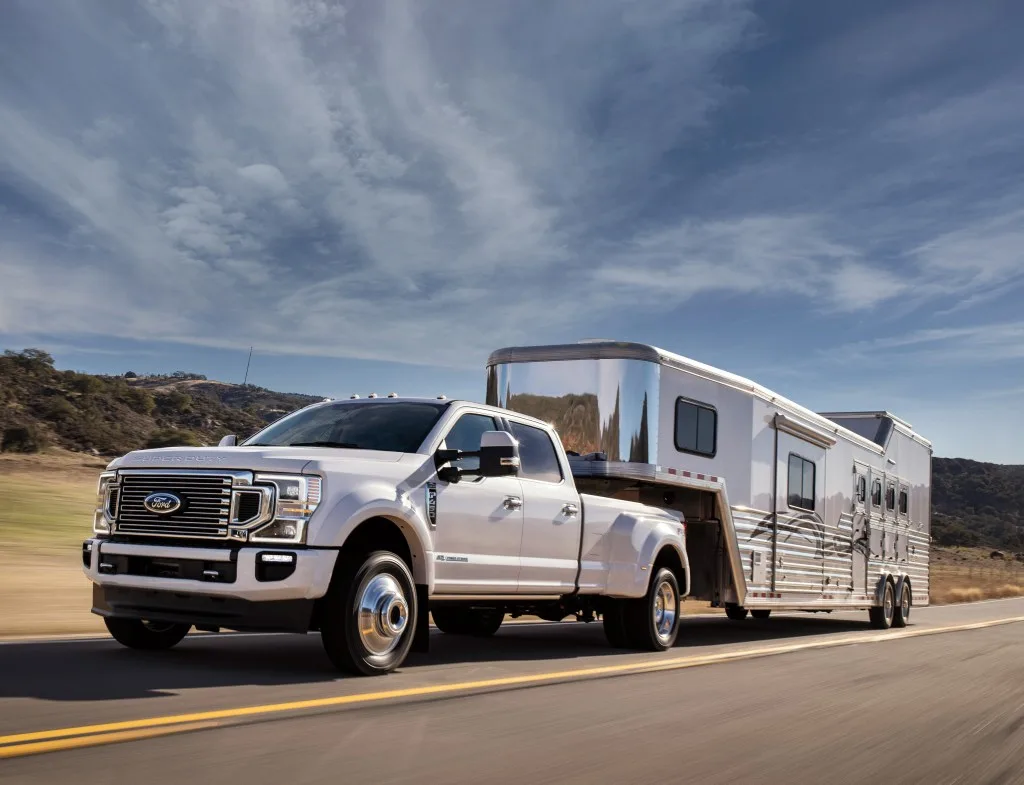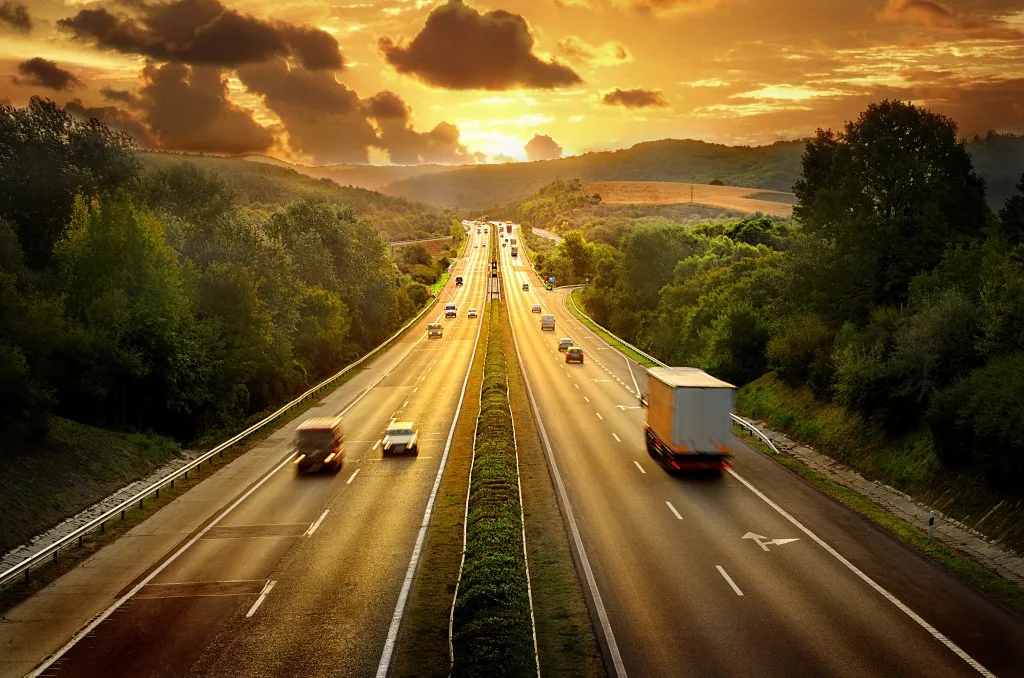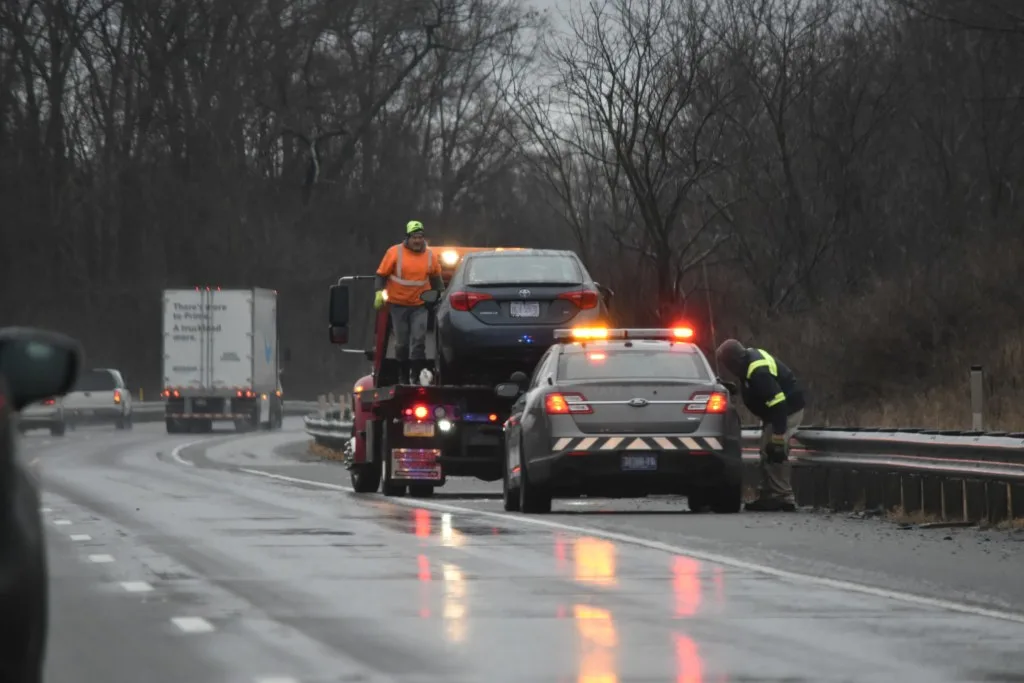We’ve all seen the drivers who spend more time looking at their phones than on the road. You’ve probably witnessed someone going too fast and weaving in and out of traffic on the interstate.
These are bad habits and dangerous patterns, not only for the driver but for all drivers and passengers on the road.
Let’s look at the seven deadly sins of interstate driving so that you can hit the road safely. Let’s dive in!
Is It Safe to Tow a Trailer or Drive An RV On Interstates?
Driving on the interstate is the preferred method of travel for most RVers. There are no low clearances, narrow roads, or tight turns.
However, if you don’t drive safely on interstates, they can be as dangerous as going on a one-lane road through the Northeast.
Maintaining a safe speed, remaining in the right lane, and being alert to other drivers are keys to a safe travel day. Just because you’re traveling on the interstate doesn’t mean you have to drive 70 mph or chase the clock to get to your next destination.
Pro Tip: RV Mechanic Reveals Which Systems Break First.

The 7 Deadly Sins of Interstate Driving
Since interstate travel is the best method for more extended, taller, and heavier RVs, let’s look at the seven worst things you can do on a travel day.
From fatigue and speeding to inattentiveness, these dangers can have severe consequences while driving or towing an RV.
1. Driving While Tired
Never hit the road if you’re tired or not feeling well. It takes a lot of focus to drive several hours in an RV. It’s more stressful than driving a traditional vehicle. Extend your stay or change your plans if you don’t feel up to the task.
If you need to pull off the road to take a nap, do so. If you need to pull into a Walmart parking lot to stay overnight, do so. Don’t risk falling asleep at the wheel or not being attentive enough to get to your destination safely.
Keep In Mind: Highway Hypnosis is Real and May Sneak Up on You.
2. Speeding
Not only is speeding dangerous, but it’s also not fuel-efficient. Motorized RVs can get anywhere from 6-20 MPG. Trucks pulling a camper can get anywhere from 6-15 MPG. When you start driving over 60 MPH, your fuel efficiency goes down even more.
However, the main concern with speeding is losing control of your 30,000-pound rig. You need more room to stop, like semi-trucks. You can’t swerve in and out of traffic towing a 30-foot travel trailer. Maintain a safe speed of around 60 MPH and get to your destination safely.
3. Not Staying in the Correct Lane
The right lane is your friend as an RVer. Don’t feel like you’re holding anyone up. Stick to a safe speed in the right lane and allow other drivers to pass you. Unless you have to get in the left lane to pass a slower vehicle, don’t leave the right lane.
This reduces the need to check your blindspots and change lanes when driving or towing something 30-40 feet in length. It also reduces the chances that you’ll go too fast if you stay in the right lane.

4. Not Anticipating Other Drivers’ Actions
When you drive a standard automobile, you should pay attention to what other drivers are doing. This is a general safety tip. When driving or towing an RV, it’s even more crucial. Other drivers aren’t looking out for you. They don’t understand that you can’t stop on a dime or change lanes in an instant.
Going uphill and downhill through mountain passes in an RV is much like traveling in a semi-truck. It is slow-moving going up and fast-moving coming down. So pay attention to other drivers’ actions and anticipate when someone might swerve in front of you or brake to let an oncoming car merge onto the interstate.
GAS SECRET: Is Costco Gas Actually Cheaper?
5. Not Leaving Enough Room
This deadly sin goes with speeding and not paying attention to other drivers. You cannot tailgate in an RV. You can’t only leave a car length in between you and the vehicle in front of you either. It takes you much longer to slow down with 20,000 pounds behind you.
An accident is highly likely if you aren’t paying attention to how others are driving around you and if you don’t leave ample room between you and the next vehicle.
If you’re going 75 MPH in Texas on I-10 because the speed limit says you can, and the car in front of you starts slowing down because of debris in the road, you can’t swerve over into the left lane when you’re towing or driving an RV that’s 35 feet long.

6. Not Planning Ahead
There are some things you can’t control on a travel day. Sometimes you have a tire blow out and spend an hour changing out the tire on the side of the road and contacting a repair shop to check the damage. Sometimes there’s an accident, and you detour off the interstate.
However, the more you plan, the better your travel day will be.
Look at your route and note any tight turns, low clearances, construction zones, etc. Prepare and plan accordingly. This will also help reduce fatigue. Plan rest stops, meal brakes, and fuel stops rather than having to look up the nearest RV-safe location while driving.
Keep in Mind: Can You Sleep on the Side of the Interstate?
7. Driving in Bad Weather
One of the most dangerous things you can do is drive an RV in lousy weather. High-profile vehicles are more susceptible to swaying in high winds. Not being able to see through the windshield because of heavy rains isn’t safe for anyone. Part of planning is looking at the upcoming weather.
If a storm is coming, consider leaving a day early or waiting a day later to check out. It’s not worth risking the safety of you, your passengers, your RV, and everyone else on the road to drive in bad weather.
Why Is Towing a Trailer or Driving An RV More Difficult?
Driving an RV or towing is more stressful than driving a standard automobile. It might not be tricky to hop in a Toyota Prius and go four hours to the beach. But when driving or towing a more extended, taller, and heavier vehicle, you must be more aware of your surroundings, go slower, and take breaks more often.
Even a couple of hours of driving can be mentally exhausting. If you throw in heavy traffic or construction zones with side barriers, traveling becomes even more complicated with white-knuckle driving and high-stress environments.
Stay Safe, Avoid These Dangers When Driving
When you hit the road for your next adventure, avoid these seven deadly sins. Don’t be in a hurry to get to your next campsite. Enjoy the journey and not only the destination. Listen to your favorite podcast, sing funny songs with your kids, and marvel at the beauty of passing landscapes. Wherever your travels take you, get there safely.
Are you guilty of any of the dangers we mentioned above? Are there any additional sins you’d add to the list?
We’ll Help You Find the Best Free Camping in the USA
You should give it a try!
As a matter of fact, these free campsites are yours to enjoy. Every time you pay federal taxes, you’re contributing to these lands.
Become a FREE CAMPING INSIDER and join the 100,000 campers who love to score the best site!
We’ll send you the 50 Best Free Campsites in the USA (one per state). Access the list by submitting your email below: